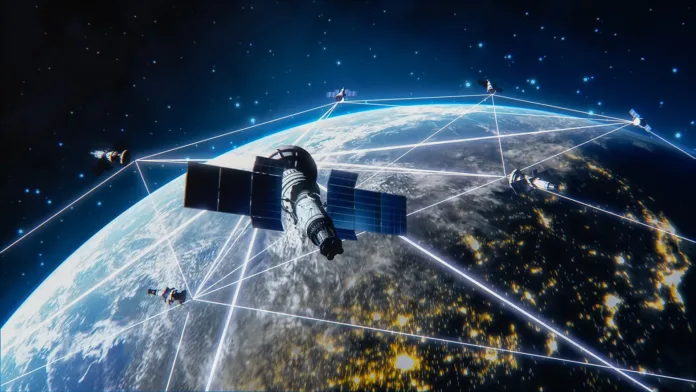In today’s fast-paced digital era, connectivity is no longer a luxury—it’s a necessity. Enter space-based internet, a technological breakthrough that’s redefining how people across the globe access the internet. This revolutionary approach, which relies on satellite constellations orbiting the Earth, promises to eliminate connectivity gaps, especially in rural, remote, and underserved areas.
As the demand for high-speed internet continues to surge, traditional infrastructure like fiber-optic cables and cellular towers are struggling to keep up, particularly in inaccessible terrains. Space-based internet offers a game-changing solution, leveraging the vast expanse of space to deliver uninterrupted access to users worldwide. This innovation is more than just a convenience—it’s a catalyst for digital equity and technological advancement.
🌍 What Is Space-Based Internet?
Space-based internet refers to the provision of internet services through a network of satellites in low Earth orbit (LEO), medium Earth orbit (MEO), or geostationary orbit (GEO). These satellites communicate with ground stations and user terminals to deliver high-speed internet access to various regions of the globe.
Unlike traditional internet infrastructure that depends on underground cables and terrestrial towers, satellite internet can reach virtually any location on Earth. This makes it an ideal solution for providing connectivity in regions where laying cables is physically or economically unfeasible.
🚀 The Rise of Satellite Mega Constellations
Over the past decade, several major players have entered the space-based internet race, launching massive satellite constellations. These constellations consist of hundreds or thousands of small, low-latency satellites orbiting close to Earth. They are designed to work together to blanket the planet with reliable internet coverage.
What sets these LEO satellites apart is their ability to deliver faster data transfer speeds and lower latency compared to traditional geostationary satellites. The result? A user experience that closely matches or even surpasses land-based broadband.
💡 Benefits of Space-Based Internet
- Global Coverage: One of the biggest advantages of space-based internet is its ability to reach areas that are off the grid, including deserts, oceans, mountains, and remote villages.
- Rapid Deployment: Unlike physical infrastructure, satellite networks can be rolled out much more quickly, making them invaluable during emergencies, natural disasters, or in war-torn areas.
- Scalability: Satellite constellations can be expanded by launching additional satellites, allowing the system to adapt to growing demand.
- Encouraging Innovation: With more people gaining access to the internet, we can expect increased innovation, online learning, telemedicine, and entrepreneurship, especially in developing regions.
🛰️ Technical Challenges to Overcome
While promising, space-based internet isn’t without its challenges:
- Latency and Speed: Although LEO satellites offer lower latency, they still face interference from atmospheric conditions and obstructions like buildings or trees.
- Signal Interruption: Continuous coverage requires seamless satellite handoffs and a dense constellation, which can be technically complex and expensive.
- Space Debris: Increasing the number of satellites also raises concerns about space congestion and the growing problem of orbital debris.
Nonetheless, with ongoing advancements in satellite technology, signal processing, and AI-driven traffic management, many of these challenges are actively being addressed.
🌐 Real-World Applications
Space-based internet has already started transforming industries and daily life:
- Education: Students in rural areas now have access to digital learning platforms.
- Healthcare: Telemedicine is reaching remote villages with limited healthcare access.
- Disaster Response: Emergency services are using satellite internet for communication and coordination in disaster zones.
- Agriculture: Smart farming solutions are becoming more accessible to farmers in isolated areas.
These use cases are only scratching the surface of what’s possible.
🌠 The Future of Global Connectivity
As satellite internet technology matures, we are likely to see a global shift in how we think about connectivity. Future developments may include hybrid systems combining space-based and terrestrial infrastructure for maximum efficiency.
Additionally, advancements in AI, quantum communications, and laser-based satellite links could further improve the reliability, security, and speed of space-based internet.
💬 Final Thoughts
Space-based internet is not just a buzzword—it’s the future of global connectivity. With its promise of universal access, scalability, and resilience, it has the potential to democratize the internet for billions of people who remain disconnected.
As this technology continues to evolve, it will play a pivotal role in bridging the digital divide, empowering communities, and shaping a truly connected world.
